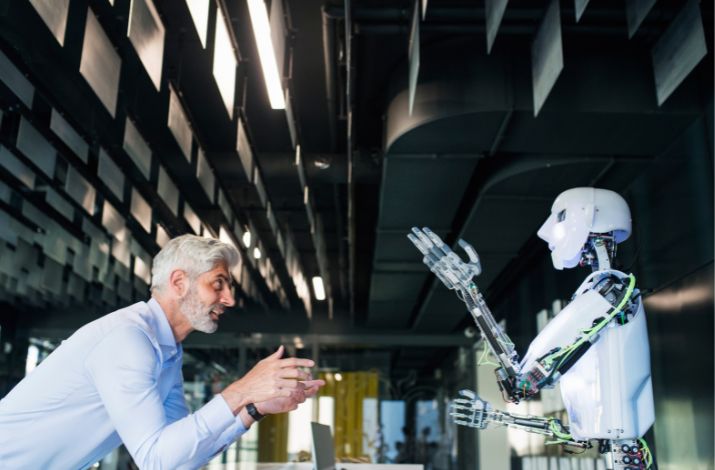The Impact of Robotics on Workforce Diversity

In recent years, robotics has evolved increasingly and integrated into different industries. It transformed the way companies and other businesses worked before and changed the nature of the profession. This technology has the potential to make a more diverse and undivided workforce. It has the possibility to change the entire system of work done in companies or organizations because of its robotics strength. Now, it become essential for businesses to adopt robotics for their benefit and to thrive in their niches.
This article will tell you about robotics and its impact on workforce diversity.
What is Robotics?
Robotics is the field of technology and engineering that deals with creating and using robots. Robots are machines that can do tasks on their own or with minimal human guidance. They can move, sense their environment, and make decisions. People use robots in various ways, from manufacturing and healthcare to exploration and everyday life.
Influence of Robotics on Workforce Diversity
As you know, the adoption of robotics is essential in the recent era to thrive in the related industry and stay competitive. Here, you will come to know about the influence of robotics on workforce diversity:
Enhanced Opportunities for Diversity
Reducing Physical Barriers: One of the most notable ways robotics impacts workforce diversity is by reducing physical barriers. For individuals with disabilities, robots provide norms to access and contribute to the workforce. Robotic devices are developed to assist someone with mobility errors. In addition, other disabilities enable them to perform tasks that might have been otherwise challenging or impossible.
Remote Work and Telepresence: With telepresence robots, employees are in a position to participate in conferences and collaborate with colleagues from everywhere in the global. This generation is especially useful for individuals who face geographical or mobility obstacles. It fosters range by means of enabling a greater inclusive paintings surroundings.
Age Diversity: As robotics automates repetitive and physically demanding tasks, it eliminates the age-related barriers that can affect older workers. This enables a more age-diverse workforce where experienced individuals can continue to contribute their knowledge and skills effectively.
Changing Skills Requirements
Upskilling Opportunities: The integration of robotics often requires new skills, such as programming, supervision, and data analysis. This presents opportunities for workers to upskill and remain relevant in the job market. Efforts to facilitate access to training and education may promote diversity by enabling individuals from diverse backgrounds to develop these skills.
Widening the Skills Gap: However, there is a flip side to the changing skill requirements. Some individuals, particularly those without access to quality education or resources, may struggle to adapt to the evolving job terrain. This can potentially heighten existing inequalities and restrict diversity efforts.

Equity and Inclusivity Challenges
Bias in Automation: Automation and robotics are not resistant to bias. Robots can memorialize existing biases, particularly in decision-making processes, if not carefully designed and programmed. This may adversely influence marginalized groups and frustrate efforts to promote diversity and equity.
Job Displacement: While robotics are able to create new task possibilities, it may also cause job displacement for those in roles that end up automatic. If no longer controlled properly, this displacement can disproportionately effect positive demographics, potentially widening present inequalities.
Redefining Job Rules
Repetitive Tasks: Robotics is well-proper for repetitive and hard tasks. As robots take over these capabilities, human employees can shift to more innovative, strategic, and complex tasks. This transition may also cause a greater numerous team of workers as individuals with broader skills and backgrounds are wanted for those new roles
Gender Diversity: Some industries have historically been dominated by a single gender. The automation of particular roles may additionally break down these gender obstacles, making it less complicated for underrepresented genders to go into traditionally male-ruled professions.
Strategies to Promote Workforce Diversity
Inclusive Design: Developers and engineers have to prioritize inclusive design standards whilst growing robot structures. This entails thinking about the numerous needs and abilities of capacity customers to make sure that robots are accessible and equitable.
Skill Development Programs: Governments, businesses, and educational institutions should collaborate to provide accessible and affordable skill development programs that enable individuals from all backgrounds to adapt to the changing job landscape.
Ethical AI and Bias Mitigation: Efforts to become aware of and mitigate biases in automation and artificial intelligence systems are vital. This involves numerous groups of builders, rigorous testing, and ongoing tracking to make certain equity and inclusivity.
Reskilling and Support: Organizations should offer reskilling and support programs for employees whose roles are being automated. These programs should be tailored to individual needs and should prioritize diversity and inclusion.
Diversity and Inclusion Initiatives: Companies should hold their efforts to promote diversity and inclusion in the place of business, ensuring that the blessings of automation are shared by way of all employees. This consists of various hiring practices, mentoring packages, and inclusive leadership.
Closing Remarks
The impact of robotics on the workforce range is complicated and multifaceted. While it can create opportunities for variety and make a more inclusive administrative center, it also poses demanding skills, equity, and bias-related situations. To navigate this transformative era successfully, society must proactively address these challenges and prioritize inclusivity in the development and deployment of robotics. By doing so, we can harness the full potential of automation while ensuring that no one is left behind in the workforce of the future.






